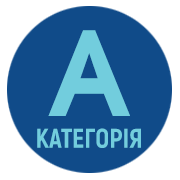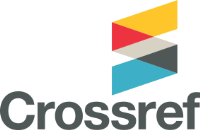ВПЛИВ ГІДРОЛІЗАТУ КОЛАГЕНУ НА ЗАГОЄННЯ РАН В УМОВАХ ЕКСПЕРИМЕНТАЛЬНОГО МОДЕЛЮВАННЯ ПЕРЕБІГУ РАНОВОГО ПРОЦЕСУ В ЩУРІВ
DOI:
https://doi.org/10.32782/2226-2008-2025-2-2Ключові слова:
щури, рана, регенерація, колаген, лікування ранАнотація
У щурів основної групи в лікувальний процес було залучено гідролізат колагену, в групі порівняння процеси регенерації відбувалися без додаткового впливу. Достовірні відмінності у формуванні судинного мікроциркуляторного русла почали спостерігати із 7-ї доби спостереження. Також у щурів основної групи відмічено більш раннє закриття новоутворених судин, швидше дозрівання сполучної тканини з формуванням більш впорядкованого колагенового каркасу. Засвідчено ефективність застосування гідролізату колагену з метою поліпшення процесів післятравматичної регенерації на моделі спричиненого ранового процесу в експерименті.
Посилання
Mirhaj M, Labbaf S, Tavakoli M, Seifalian AM. Emerging treatment strategies in wound care. Int Wound J. 2022; 19(7): 1934–1954. DOI: 10.1111/iwj.13786.
Kolimi P, Narala S, Nyavandi D, Youssef A, Dudhipala N. Innovative Treatment Strategies to Accelerate Wound Healing: Trajectory and Recent Advancements. Cells. 2022; 11(15): 2439. https://doi.org/10.3390/cells11152439.
Farahani M, Shafie, A. Wound healing: from passive to smart dressings. Advanced Healthcare Materials. 2021; 10(16): 2100477. https://doi.org/10.1002/adhm.202100477.
Freedman BR, Hwang Ch, Talbot S, et al. Breakthrough treatments for accelerated wound healing. Sci. Adv. 2023; 9: eade7007. DOI: 10.1126/sciadv.ade7007.
Niculescu AG, Grumezescu AM. An Up-to-Date Review of Biomaterials Application in Wound Management. Polymers. 2022; 14(3): 421. https://doi.org/10.3390/polym14030421.
Sharma S, Rai VK, Narang RK, Markandeywar TS. Collagen-based formulations for wound healing: A literature review. Life Sciences. 2022; 297: 120436. https://doi.org/10.1016/j.lfs.2022.120436.
Parizad N, Hajimohammadi K, Goli R. Surgical debridement, maggot therapy, negative pressure wound therapy, and silver foam dressing revive hope for patients with diabetic foot ulcer: A case report. International Journal of Surgery Case Reports. 2021; 82: 105931. https://doi.org/10.1016/j.ijscr.2021.105931.
Thomas DC, Chong Li Tsu, Nain R A. The role of debridement in wound bed preparation in chronic wound: A narrative review. Annals of Medicine and Surgery. 2021; 71: 102876. https://doi.org/10.1016/j.amsu.2021.102876.
Nowak M, Mehrholz D, Barańska-Rybak W, Nowicki RJ. Wound debridement products and techniques: clinical examples and literature review. Advances in Dermatology and Allergology/Postępy Dermatologii i Alergologii. 2022; 39(3): 479–490. https://doi.org/10.5114/ada.2022.117572.
Tran DL, Huang R-W, Chiu E, et al. Debridement: technical considerations and treatment options for the interprofessional team. Advances in skin & wound care. 2023; 36(4): 180–187. DOI: 10.1097/01.ASW.0000920660.07232.f7.
Parkhomenko K, Tsivenko O, Shmorhun V, Briukhanova T. Vacuum-therapy in the complex treatment of gunshot wounds: current aspects and prospects (review). Journal of V. N. Karazin Kharkiv National University. Series 'Medicine'. 2023; 46: 89–100 (in Ukrainian). DOI: https://doi.org/10.26565/2313-6693-2023-46-10.
Khomenko IP, Barkovskyi AS, Tertyshnyi SV, et al. The concept of using platelet automeso-concentrate in the complex rehabilitation of servicemen after gunshot wounds with defects of integumentary tissues. Clinical and Preventive Medicine. 2024; 8: 104–113 (in Ukrainian). https://doi.org/10.31612/2616-4868.8.2024.12.






